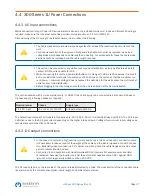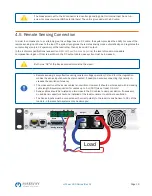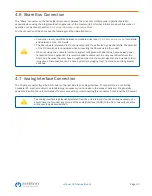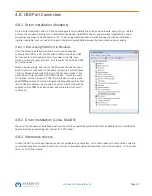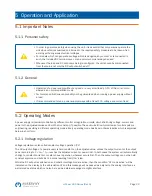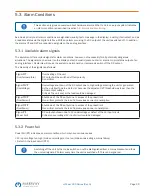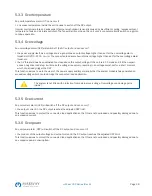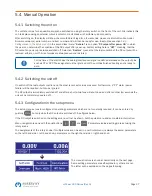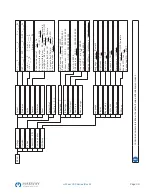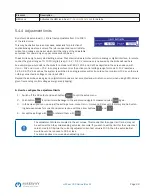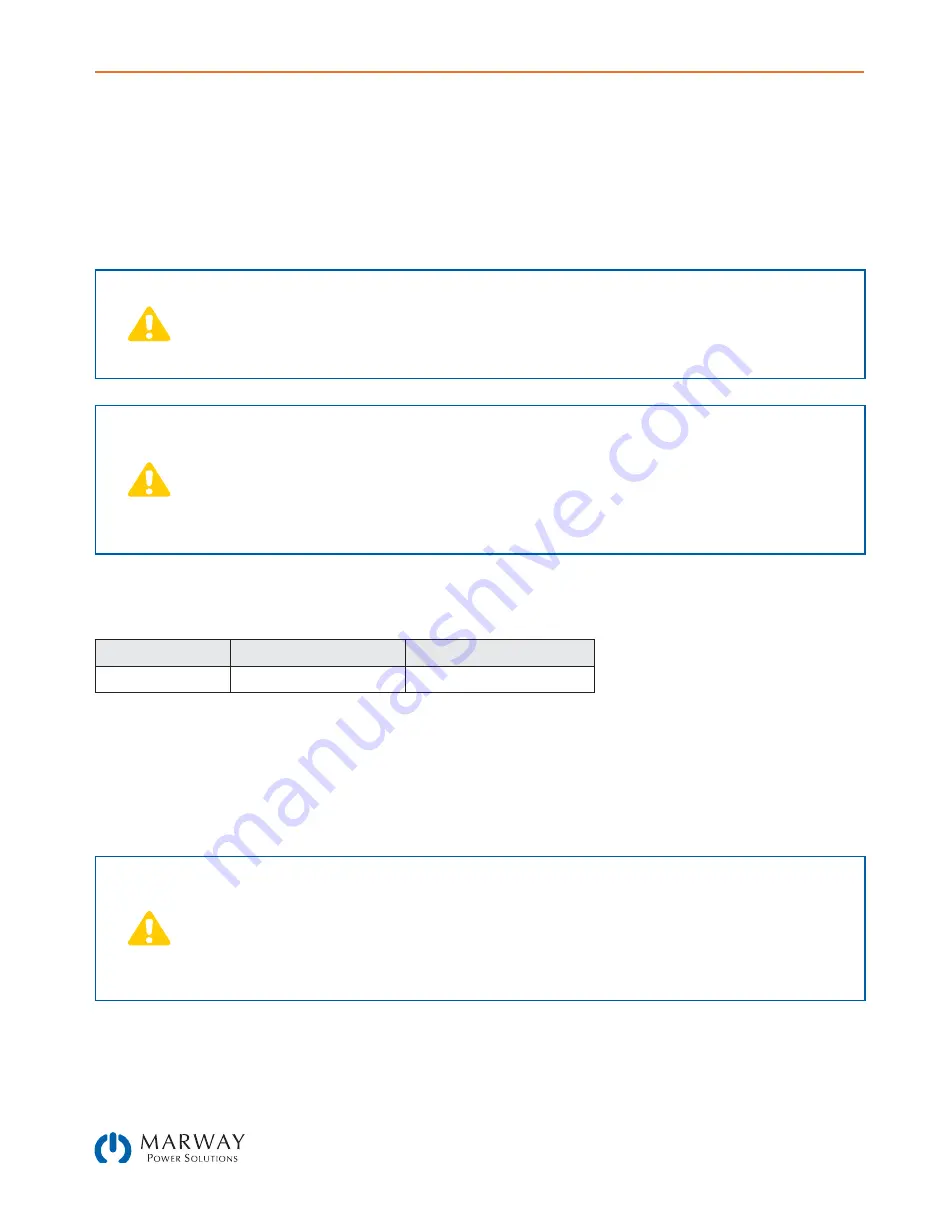
Page 17
mPower 300 Series (Rev G)
4.4 300 Series 1U Power Connections
4.4.1 AC input connections
Mains connection for an mPower 300 series system is done via the included mains cord. In case a different AC wiring is
required, make sure that the other cable has a minimum cross section of 1.5 mm² (AWG 12).
Dimensioning of the DC wiring to the load/consumer has to reflect the following:
•
The cable cross section should always be specified for at least the maximum input current of the
unit.
•
Continuous operation at the approved limit generates heat which must be removed, as well as
voltage loss which depends on cable length and heating. To compensate for these the cable cross
section should be increased and the cable length reduced.
•
The unit can be connected to any wall socket or power distribution, as long as it features a safety
contact (GND) and is capable for 16 A.
•
When connecting the unit to a power distribution unit, along with other electric devices, it is import-
ant to consider the total power consumption of all devices on the outlet, so that the maximum cur-
rent (power ÷ minimum voltage) does not exceed the definition for the wall socket, the multi-socket
outlet and/or main distribution
•
Before plugging in the input plug ensure that the unit is switched off by its mains switch.
The unit is delivered with a 3 wire mains cord (L, N, GND). If the unit is going to be connected to a standard 2-phase or
3-phase supply, following phases are required:
Nominal power
Phases
Supply type
1.5 kW / 3 kW
L1 or L2 or L3, N, GND
At least wall socket 16 A
The default input values of all models in this series are: 230 V, 16 A, 50 Hz. It is internally fused with 16 A. The 16 A input
definition is due to the AC input current depending on the higher intake at low AC voltage (for minimum input voltage see
technical specs).Connection to DC loads
4.4.2 DC output connections
•
In the case of a unit with a high nominal current and hence a thick and heavy DC connection cable
it is necessary to take account of the weight of the cable and the strain imposed on the DC connec-
tion. Especially when mounted in a 19" cabinet or similar, where the cable hangs on the DC output,
a strain reliever should be used.
•
Connection to and operation with transformerless DC-AC inverters (for example solar inverters)
is restricted, because the inverter can shift the potential of negative output (DC-) against GND
(ground), which is generally limited to max. ±400 V DC.
The DC load output is on the rear side of the unit and is
not
protected by a fuse. The cross section of the connection cable
is determined by the current consumption, cable length and ambient temperature.















